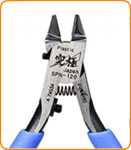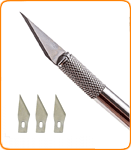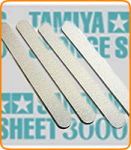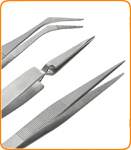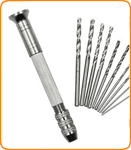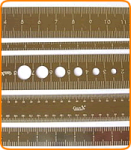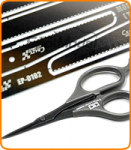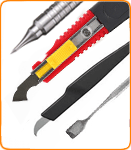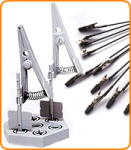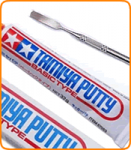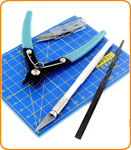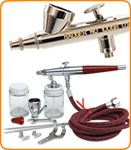Hasegawa 01333 1/72 Mitsubishi F-1 [C3]
The Mitsubishi F-1 is a support fighter for the Japan Air Self-Defense Force, developed from the trainer type T-2.
As Japan's first domestically produced supersonic jet fighter, development began in 1972, and procurement began in 1975.
In the past, the F-86F was used as a support fighter, but in order to operate a full-scale support fighter, the Japan Air Self-Defense Force considered introducing the F-5E Tiger II, but decided on a fighter modification of the T-2 trainer, which was in operation at the time.
Development of the FS-T2 Kai (later the F-1) began, and for this purpose the mass-produced T-2 No. 106 and No. 107 were completed as special T-2 specifications for flight testing, and various system tests and flight tests were conducted. Based on the results of these tests, the Director General of the Defense Agency approved the use of the aircraft by the unit on November 14, 1976, and at the same time the official name was decided from FS-T2 Kai to the Support Fighter F-1.
The F-1 was deployed starting in fiscal year 1977, and was deployed to the 3rd and 8th Squadrons at Misawa Air Base and the 6th Squadron at Tsuiki Air Base, replacing the F-86F.
The F-1 is a support fighter, but is also used as an interceptor fighter.
For this reason, it is equipped with a variety of weapons.
For interception missions, it is equipped with Sidewinder air-to-air missiles, and for support combat, it is equipped with 500lb bombs, anti-ship missiles, 70mm or 127mm rockets, etc. When the F-1 is modified from the T-2 to perform such a variety of missions, the search and tracking radar is strengthened, a radio altimeter and atmospheric characteristic computer are added, radar warning devices, strike cameras, etc. are installed, and additional modifications such as mounting pylons for weapons are made.
Among these modifications and additional equipment, the J/AWG-12 radar and J/ASQ-1 control computer are distinctive features of the F-1.
These devices are important for accurate bombing. They calculate information from the radar, head-up display (HUD), inertial navigation system, radio altimeter, atmospheric characteristic computer, etc., and output the optimal information to the HUD and radar.
This device also has an automatic mode, which projects the bombing point and the flight path to it on the HUD, and when the pilot operates the bombing, it calculates the optimal time to drop the bomb and drops it automatically.
The F-1 was fitted with an autopilot in 1983, during production, and this was also installed on previous aircraft during regular repairs.
This reduced the burden on the pilot and allowed the aircraft to perform attack missions more reliably.
Also, due to the nature of the missions, the aircraft often flew at very low altitudes, which caused problems with collisions with birds, but this was solved by making the fixed windshield out of sturdy polycarbonate and using a one-piece canopy with no frame.
Data:
Crew: 1
Width: 7.88m
Length: 17.85m
Height: 4.45m
Maximum takeoff weight: 13,700kg
Engine: TF-40-IHI-801A Adore
Thrust: 2,136kg (3,207kg when using A/B) x 2
Maximum speed: Mach 1.6/11,000m
Fixed armament: M61 A1 20mm Vulcan cannon
First flight: June 16, 1977 (FS-T2 modified)
As Japan's first domestically produced supersonic jet fighter, development began in 1972, and procurement began in 1975.
In the past, the F-86F was used as a support fighter, but in order to operate a full-scale support fighter, the Japan Air Self-Defense Force considered introducing the F-5E Tiger II, but decided on a fighter modification of the T-2 trainer, which was in operation at the time.
Development of the FS-T2 Kai (later the F-1) began, and for this purpose the mass-produced T-2 No. 106 and No. 107 were completed as special T-2 specifications for flight testing, and various system tests and flight tests were conducted. Based on the results of these tests, the Director General of the Defense Agency approved the use of the aircraft by the unit on November 14, 1976, and at the same time the official name was decided from FS-T2 Kai to the Support Fighter F-1.
The F-1 was deployed starting in fiscal year 1977, and was deployed to the 3rd and 8th Squadrons at Misawa Air Base and the 6th Squadron at Tsuiki Air Base, replacing the F-86F.
The F-1 is a support fighter, but is also used as an interceptor fighter.
For this reason, it is equipped with a variety of weapons.
For interception missions, it is equipped with Sidewinder air-to-air missiles, and for support combat, it is equipped with 500lb bombs, anti-ship missiles, 70mm or 127mm rockets, etc. When the F-1 is modified from the T-2 to perform such a variety of missions, the search and tracking radar is strengthened, a radio altimeter and atmospheric characteristic computer are added, radar warning devices, strike cameras, etc. are installed, and additional modifications such as mounting pylons for weapons are made.
Among these modifications and additional equipment, the J/AWG-12 radar and J/ASQ-1 control computer are distinctive features of the F-1.
These devices are important for accurate bombing. They calculate information from the radar, head-up display (HUD), inertial navigation system, radio altimeter, atmospheric characteristic computer, etc., and output the optimal information to the HUD and radar.
This device also has an automatic mode, which projects the bombing point and the flight path to it on the HUD, and when the pilot operates the bombing, it calculates the optimal time to drop the bomb and drops it automatically.
The F-1 was fitted with an autopilot in 1983, during production, and this was also installed on previous aircraft during regular repairs.
This reduced the burden on the pilot and allowed the aircraft to perform attack missions more reliably.
Also, due to the nature of the missions, the aircraft often flew at very low altitudes, which caused problems with collisions with birds, but this was solved by making the fixed windshield out of sturdy polycarbonate and using a one-piece canopy with no frame.
Data:
Crew: 1
Width: 7.88m
Length: 17.85m
Height: 4.45m
Maximum takeoff weight: 13,700kg
Engine: TF-40-IHI-801A Adore
Thrust: 2,136kg (3,207kg when using A/B) x 2
Maximum speed: Mach 1.6/11,000m
Fixed armament: M61 A1 20mm Vulcan cannon
First flight: June 16, 1977 (FS-T2 modified)
| General Info | |
| Scale | 1/72 |
| Type | Scale Model Kit |
| Subtype | Military Aircraft |
- Stock: Out Of Stock
- SKU: HA 01333

Hasegawa
"In-Stock" Really Means It
Combine Shipping & Save
SAME or Next day shipping*
There are no reviews
Maybe you can help? Many users will be grateful to you. And so are we.
![1/72 Mitsubishi F-1 [C3]](/image/cache2/70x70_contain/catalog/hasegawa/HA01333.jpg?v=12)
![1/72 Mitsubishi F-1 [C3]](/image/cache2/70x70_contain/catalog/hasegawa/HA01333_1.jpg?v=12)
![1/72 Mitsubishi F-1 [C3]](/image/cache2/550x550_contain/catalog/hasegawa/HA01333.jpg?v=12)
